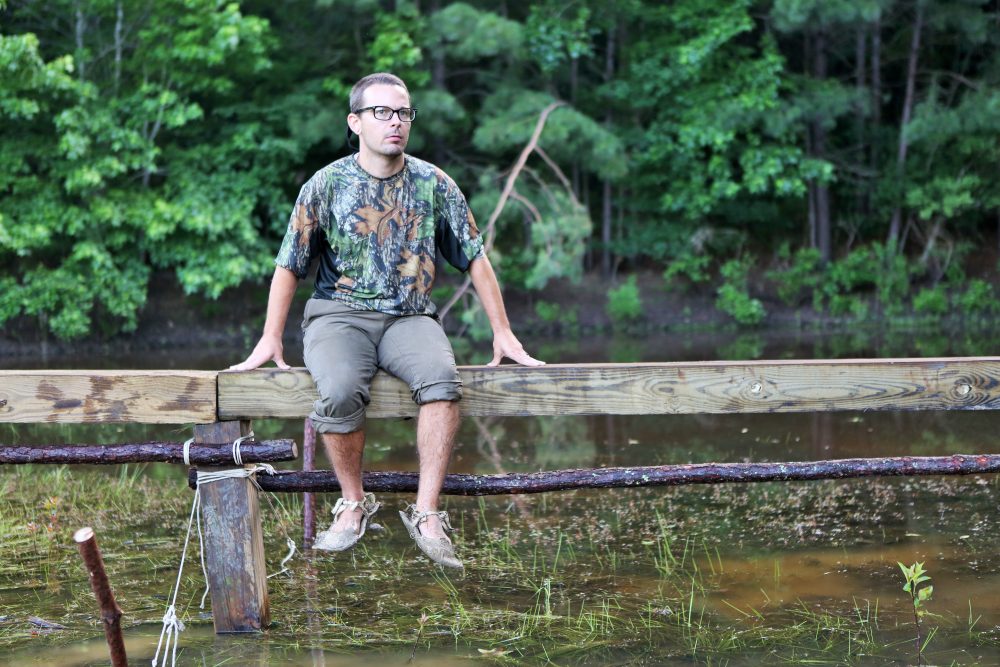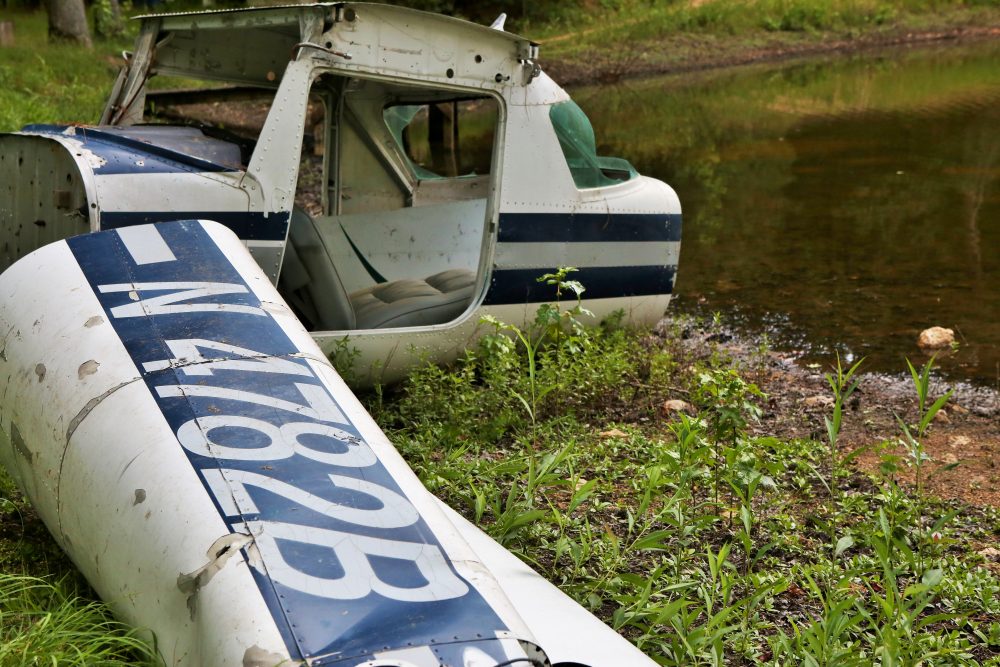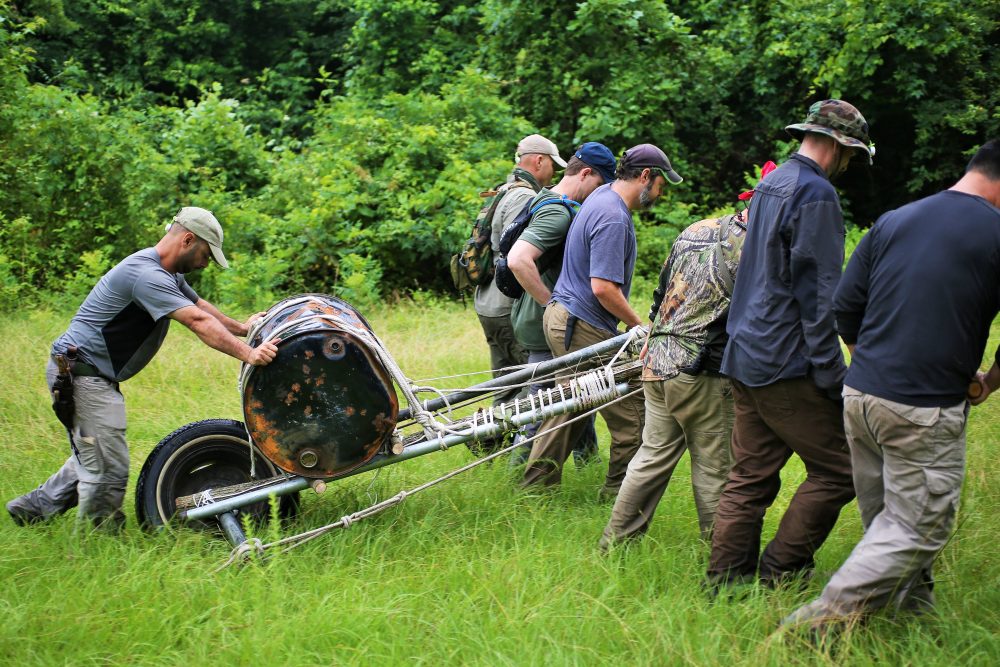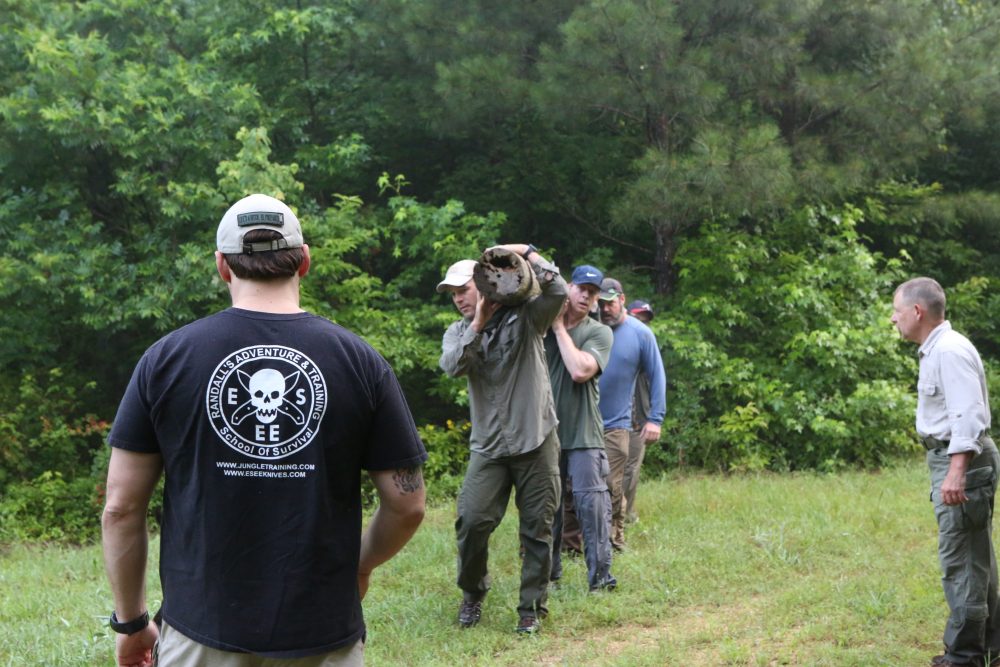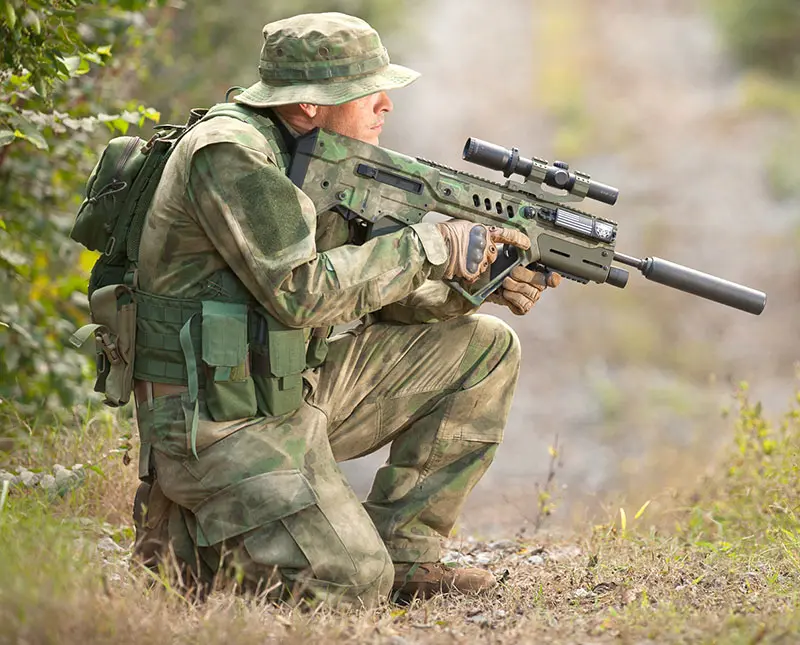“You all paid good money for this,” instructor Patrick Rollins said on a few occasions during the Randall’s Adventure & Training Field Survival Class in Alabama. For years I’ve heard owners Mike Perrin and Jeff Randall say they should advertise their jungle survival class as a sleep deprivation and weight loss program. They‘re finally offering one stateside now!
Final challenge was to construct, using minimal materials and tools, a bridge over a pond. Bridge had to support their own weight. Each team member went across slowly and was careful not to end up in the water.
Table of Contents
THE PLAN
The Field Survival Class is designed to simulate a 72-hour survival scenario, during which students learn the basic survival and navigational skills needed to self-rescue or survive until rescue arrives. They experience the hunger, sleep deprivation, exposure to the elements, and general discomfort usually associated with a survival scenario. They must also learn to work together as a group to overcome mental and physical challenges.
Each Field Survival Class is a little different and is tweaked until it’s appropriate for the terrain and weather. Naturally, things evolve and new ideas are tried out, while older ones are dropped. That being said, every class starts off right, and by that I mean with a little PT (physical training).
Field Survival Course has same premise as famed Jungle Survival Class taught by Randall’s Adventure & Training in Peru. Now people can take the U.S. version of the class.
WHY SO MUCH PT?
I recently observed a Field Survival Class. Students were all issued an egg to take care of during the first part of the class. If the egg broke, they had to pay for it with a little more PT. At first I was skeptical, not seeing the relevance of this type of activity in a survival class. But we do not choose our times of peril!
Being prepared physically is just as important as knowing basic survival skills. A stranded vehicle, a long swim to shore, a climb up a mountain, or a long night in the bush are all very taxing on both mind and body. The entire PT section was created to help simulate this type of exhaustion.
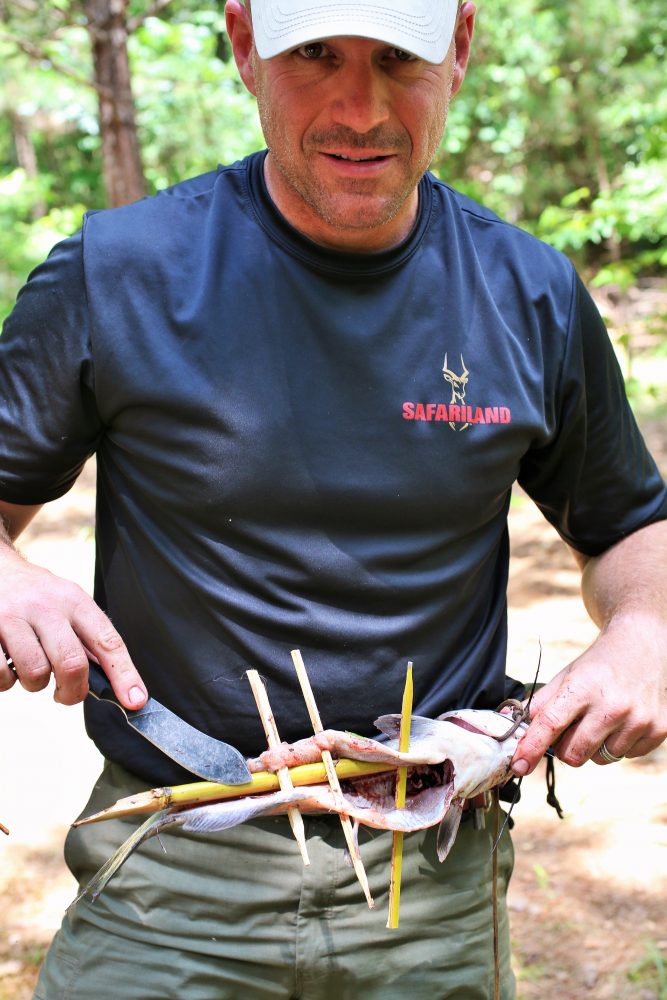
Hydration was stressed as well as team dynamics. Collecting dew from the early morning grass is a great way to obtain water. Students had to drop and roll around, soaking up the dew.
A myriad of physical activities was bestowed upon the participants until they were good and worn down. Carrying a life-size dummy (weighing about 180 pounds) around the property and through a pond was just one of the creative tasks that had to be completed before students could move on to the next activity.
What better way to bring people together than a pole-carrying exercise around a field? There was also a short relay race across a leech-ridden pond that was timed for a prize. PT was either individual or group wide for some minor infraction, or sometimes it occurred if the instructor was bored and wanted to play with the students.
There were frequent egg-checks to see who’d broken theirs, and PT was issued accordingly. After about two hours of PT, it was back to the classroom for Power-Point and navigation training, given to get a feel for map and compass before heading over to the shelter, knife and fire skills camp. Without any snack break, students had to muscle through on to the next activities.
BARE-BONES SURVIVAL
Only the very basics of knife safety and use, shelter construction and selection of materials, fire building techniques, primitive spears, and traps were taught. Anything other than that was beyond the scope of the class. Down and dirty bare-bones survival skills will get a person through just about any situation, and that was the focus.
Students had to float fire on a platform in chest-deep water. Two students walk out of deep pond into shallower waters.
The star navigation course sent three groups around the training property, rotating leaders and pace counters so everybody got a feel for each job. In previous classes, this task had taken some groups over ten hours. When the teams were ready to go, they were given five-gallon water jugs to carry as their water source.
They had to be creative and use tools, wood from the forest, and their brains. Upon completing the star course, the teams had to carry the dummy to the top of a rappelling tower. They were then given coordinates to where they would need to set up a camp, making shelter and fire.
Constructing a device to move a 55-gallon water drum was just one activity that required both brains and muscle, including good teamwork and leadership qualities.
Classroom training and skill-building continued well into the night. I saw the sun go down and soon it was coming up. More physically punishing activities were on the way.
At about 0500, students had a new activity to help them wake up. They were given coordinates to an area in the woods that had materials to be collected on the way to a 55-gallon water drum. Out of two metal poles, rope, and a tire, they had to construct a device to transport the drum full of water back up to the classroom. This was a slow and methodical, yet tedious, process. It only worked if they acted like a team and used their most important tools—their brains!
Team Building Skills 101: Lugging around this 20-foot-long telephone pole was just one extreme activity students had to endure in order to develop group dynamics.
The rest of the day was spent on more basic camp skills, map and compass exercises, signaling techniques, and preparing live animals for the only food given during the class.
Seemingly out of context, students were given a quick sewing lesson on making a lock-stitch. They were soon stripped of their shoes and issued some canvas, foam, cordage, and a needle. They would have to finish the class with the shoes they now had to make. As exhaustion settled in, they were given new coordinates for the camp they had to build from scratch.
Gear was stripped and the entire group was given a pack to share. At about 0200, it was time to wake the students and send them on yet another mission.
The scenario was a downed airplane in a pond. The students were survivors but had one injured member. They had to make fire and float it across with the injured member, without falling into the water. This took strong team leadership skills to accomplish.
Students float “injured” team member across pond. Water jugs and wooden poles were used to construct a litter to get student across safely.
The last big activity was building a bridge across the pond using supplied materials. Students then had to get themselves and the dummy across the bridge without it coming apart or them falling in the water. They did it! Standing in the mud comparing mosquito bites and counting leeches was what it’s all about.
It has been said that survival is a lazy man’s game, but the Field Survival class proves it’s a thinking man’s game. Being prepared for a survival experience is not just about skills, but also physical and mental challenges. Randall’s Adventure & Training remains on the cutting edge of survival!
Reuben Bolieu is an adventurer, writer, photographer and survival instructor for Randall’s Adventure & Training. He has spent most of his life hiking and backpacking through the wildernesses of the world. A lifetime student of survival, he has studied primitive survival techniques from all over the world.
SOURCE
ESEE KNIVES/RANDALL’S ADVENTURE & TRAINING
(256) 613-0372
www.eseeknives.com

